Laser Vision Correction C-Ten “No-touch No-Cut”
What Is C-TEN (Customized Trans-Epithelial Non-Contact)?
The principle of laser vision correction is to reshape the cornea in order to correct short-sightedness and long-sightedness where the cornea is reshaped in the middle, known as the stroma.
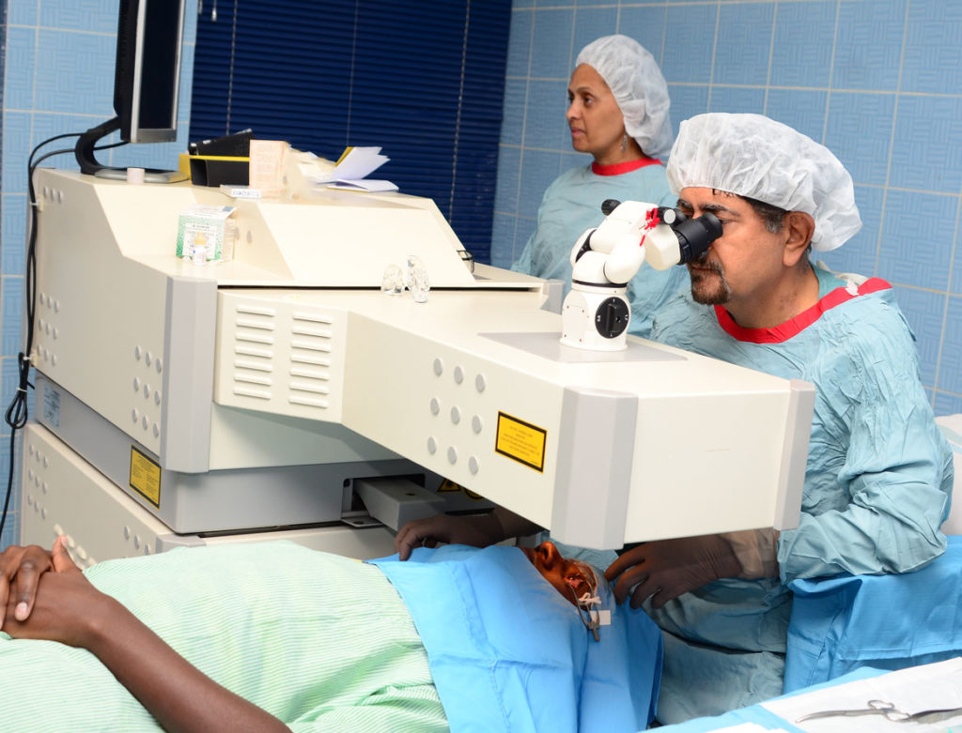
In previous technology, laser vision correction was done by LASIK, Epi-LASIK or LASEK. All three procedures require some sort of surgical intervention, but in C-TEN laser vision correction, no surgical intervention is required.
Keeping the same principle in mind, C-TEN is a revolutionary technology where no instruments touch the eyes of the patient; the laser is specialized to do the treatment. C-TEN laser vision correction is a very popular treatment in Switzerland, Canada, Norway and Europe and is now available for the first time in Africa and Asia at Laser Eye Centre. iRES IVIS 1000Htz is the world’s fastest laser machine.
How C-TEN Laser Vision Correction Is Done
Stage 1: Assessment

Dr. Joshi examining a patient
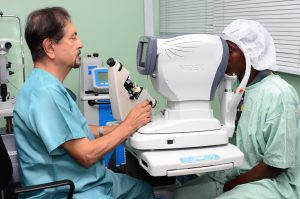
Checking the refraction of the patient.
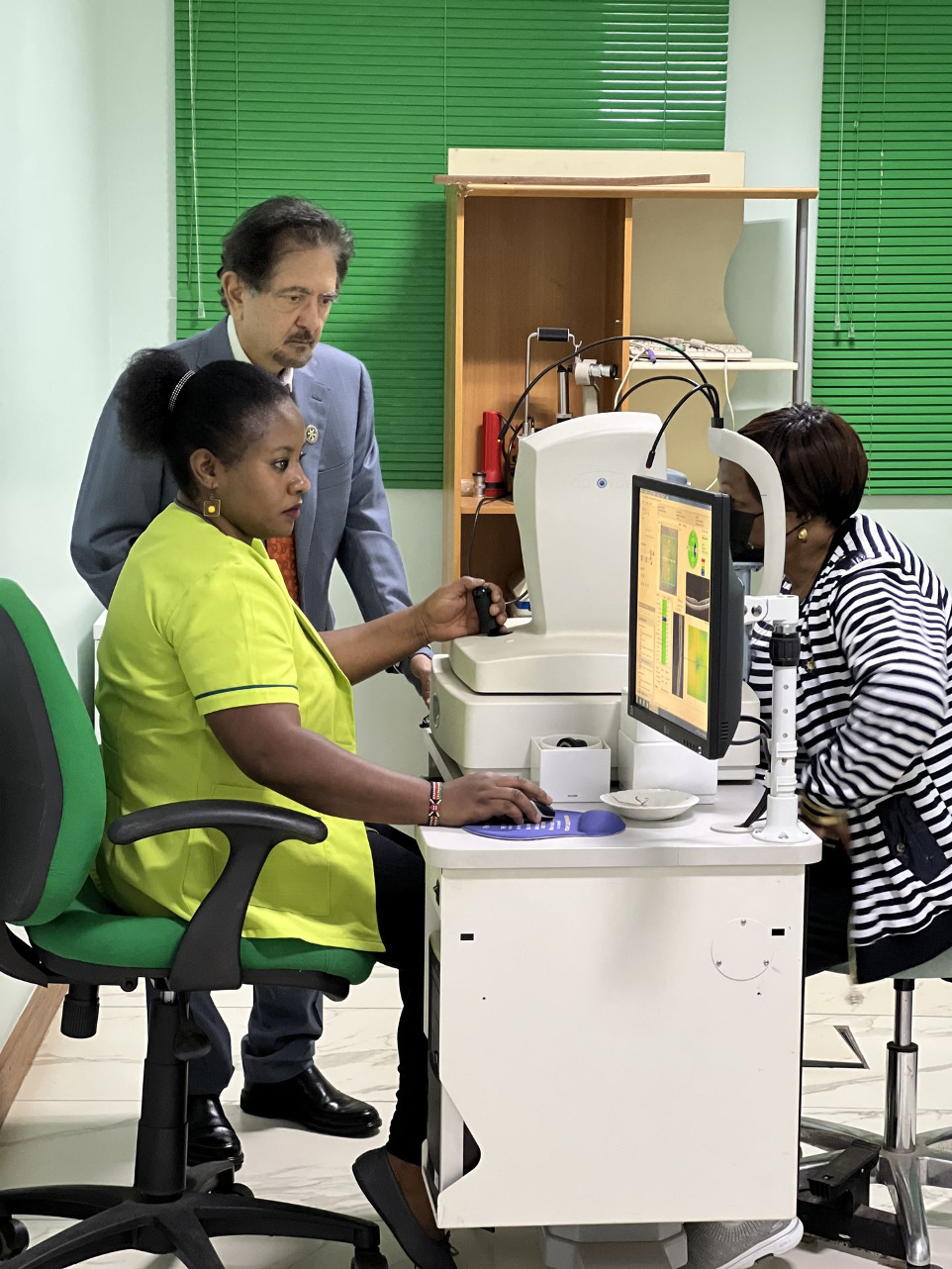
Topography takes the mapping of the cornea.
Stage 2: Treatment Plan
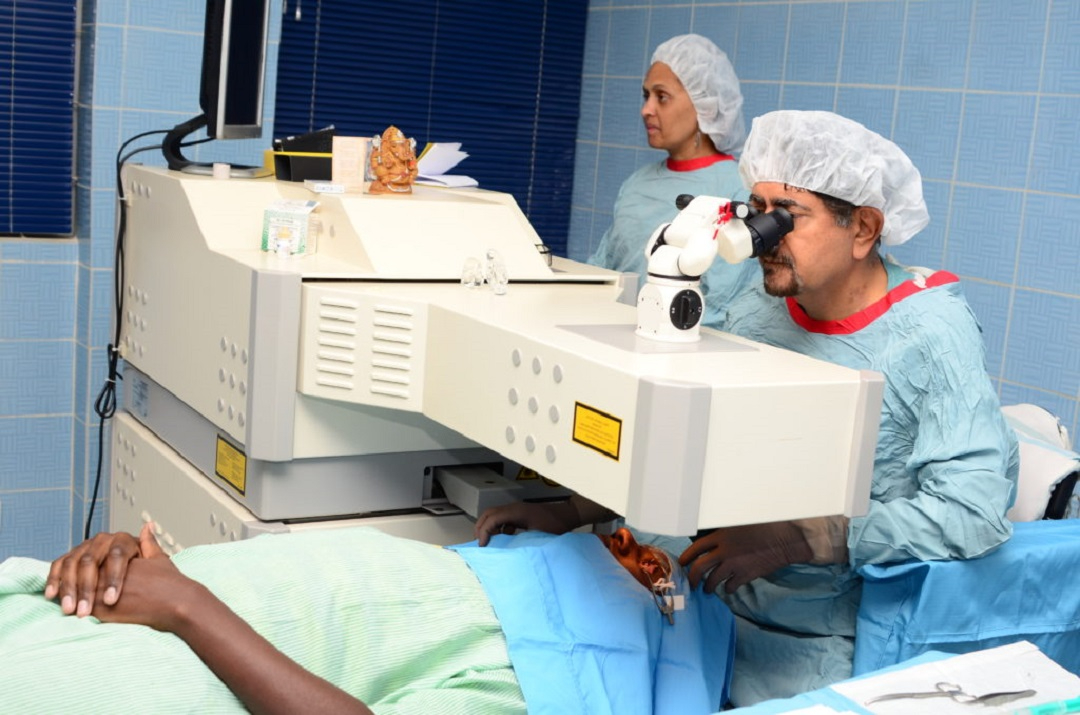
Planning Treatment
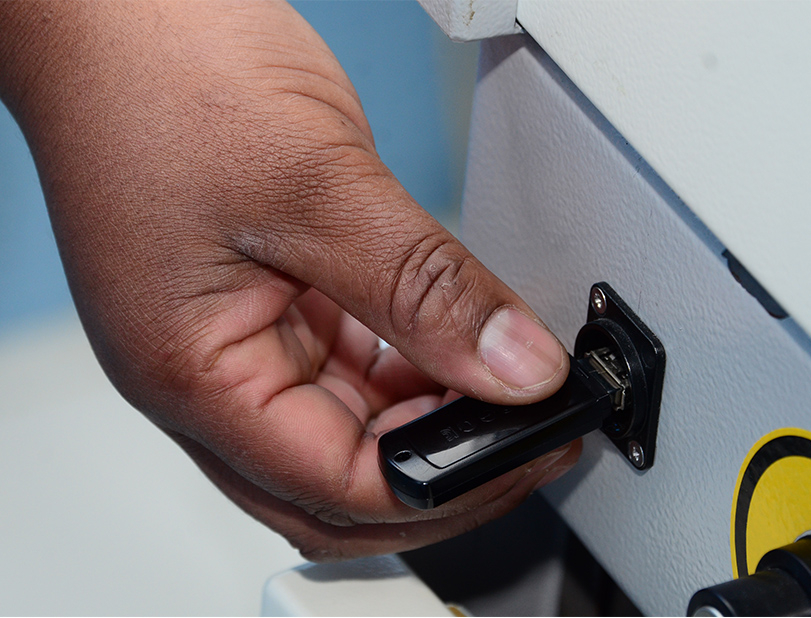
Exporting the treatment to the Laser machine
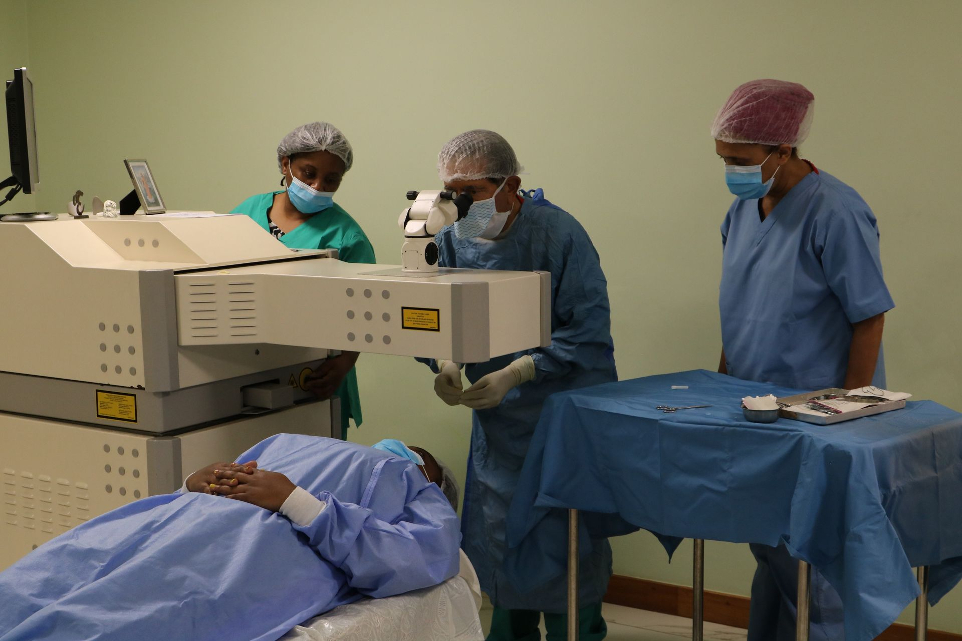
Performing the C-Ten procedure
Laser Eye Surgery: New Technology Offers Surgical Solution
Who Will Benefit From Laser Vision Correction?
Myopia
Myopia, more commonly known as short-sightedness, occurs when an eye has too much focusing power.
This means that the eyeball is either too long or the cornea is too steep and the projected image falls short of the retina. The result is an improperly transmitted message to the brain or simply a blurred image.
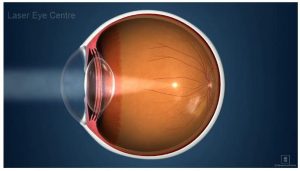
Hyperopia
Hyperopia or long-sightedness occurs when an eyeball is too short or the cornea’s curvature is too flat.
Therefore, the image that is being focused upon falls past the retina resulting in blurred or distorted vision
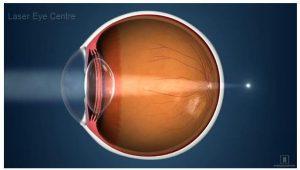
Astigmatism
An astigmatic eye has an uneven surface — the cornea can be more curved or steeper at one axis than others.
This results in having more than one focal point and of course blurred vision. An astigmatic eye is shaped more like a football (toric) whereas a normal shaped eye is more spherical, like a basketball.
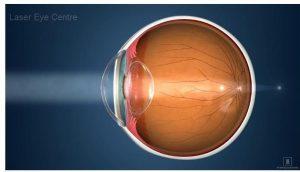
Presbyopia
Presbyopia is a natural ageing process whereby we have difficulty in near work like reading and writing. Usually it sets in from the age of 40.
The lens of the eye hardens and the muscles weaken. When people who have perfect vision all their lives become Presbyopic, they need to wear reading glasses. People who already wear glasses for distance vision need to wear bifocals.
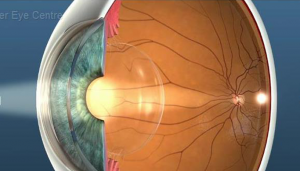
After Cataract Surgery
There are still some traditional big incision cataract surgeries being done in East Africa, which lead to high astigmatism and in some cases, there could be an error in the calculation of the intraocular implant. Therefore, after the cataract operation, patients need to wear glasses which can easily be rectified by C-TEN laser vision correction.
After Corneal Transplant
Sometimes after successful corneal transplants, recovery of the vision is not good because of high astigmatism caused by irregular surface of the cornea. Now with C-TEN laser vision correction, we can improve the quality of vision for such patients in 30 seconds.
LASIK
What is LASIK?
LASIK stands for Laser Assisted In-Situ Keratomileusis. We at Laser Eye Centre do not perform LASIK anymore because according to Dr. Joshi, C-TEN laser vision correction is much safer, less invasive and more predictable. Still, LASIK is popular in some centers and some countries, and therefore we will describe the procedure.
The surgeon creates a micro-thin flap on the surface of the cornea using a device called a microkeratome. The flap is then lifted to one side, exposing the stroma. The laser reshapes this surface to re-focus the light waves on the retina. After 3-5 minutes of laser, the flap is re-positioned, where it holds naturally in position. In order to make the flap, a very high vacuum is applied on the eye to flatten the cornea. This high vacuum can be detrimental to the cornea, especially in short-sighted patients.
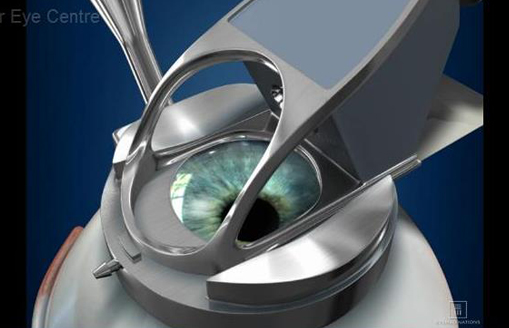
Flap is Created with Micro-Keratome
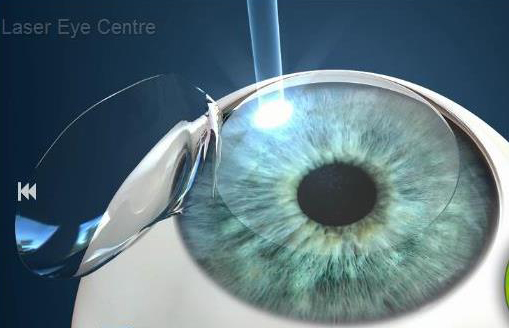
Laser reshapes Cornea
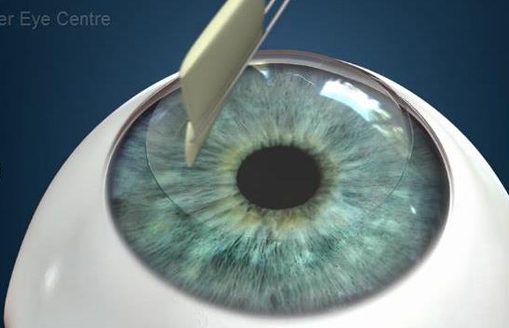
Flap is re-positioned
LASIK Complications:
- Flap is made- which means there will be surgical instruments touching the patient’s eyes.
- Since the flap is lifted for the laser vision correction, there are chances of flap related complications.
- In some patients, after the flap is re-positioned, there could be some inflammation under the flap which can make vision very cloudy.
- Sometimes, surface cells (epithelium) can go under the flap.
- Possibility of dry eyes, as when the cornea is cut, the corneal nerves are cut which can lead to dry eyes for a few years, and permanently for some patients
- The LASIK corneal flap can lead to night driving difficulty.
- While cutting the corneal flap, the corneal criss-cross architecture is damaged, which can make the cornea weak. In some patients, the cornea can start bulging, known as ectasia.
- Since there would be pressure on the cornea to raise the flap, bio-mechanical strength is compromised by 40%.
Femtosecond Lasik – this is a device whereby the flap is cut by laser, and this increases the chance of complications such as dry eye, infection and inflammation. Therefore, in Dr. Joshi’s opinion, C-TEN is a much safer option as compared to femtosecond Lasik.
C-TEN
C-TEN uses the latest technology where there is no contact with the patient’s eye. The ‘no-touch no-cut’ laser does all the work, and the treatment is over in a matter of seconds. The procedure is the safest and fastest treatment available with minimal recovery time.
C-TEN VS LASIK
The sections below show both the C-TEN and the older LASIK procedures.
It is clear how the C-TEN treatment is more advanced, faster, and safer with zero contact with the patient’s eye.
C-TEN (NO-TOUCH NO-CUT LASER) (RECOMMENDED)
- NO FLAP CREATION
- NO FLAP RELATED COMPLICATIONS AS FLAP IS NOT MADE
- LESS INTERFACE COMPLICATIONS
- LESS CHANCES OF OPTICAL COMPLICATIONS
LASIK (Not RECOMMENDED)
- FLAP CREATION
- POSSIBILITY OF FLAP RELATED COMPLICATIONS
- INTER-PHASE COMPLICATIONS SUCH AS DLK OR EPITHELIAL GROWTH MAY OCCUR
- DRY EYES
- OPTICAL COMPLICATIONS SUCH AS SPHERICAL ABBRETIONS WHICH LEAD TO NIGHT DRIVING PROBLEMS
- BIOMECHANICAL STRENGTH IS COMPROMISED BY 40%
FAQs
What is laser and how does it work?
Laser light is low-energy coherent light of a single wavelength whose energy is concentrated and works together in one direction. It can be focused to a point and be used surgically to treat eye problems.
Lasers work with the heat generated from light, or with many tiny energy pulses. Because laser light can be controlled so precisely, it is safe and reliable.
Is everyone who wears glasses or contacts suitable for this procedure
No, but about 95 per cent of glasses and contact lens users are.
If you suffer from an existing corneal or retinal disease, Type 1 Diabetes, inflammation in the eye or Aids, an extremely thin cornea or Keratoconus, it will not be possible to perform this procedure.
What happens during C-TEN Laser Treatment?
On the day of the procedure, the patient is told to lie under the machine. After inserting an anesthetic drop into the eye, a small clip is put in place to prevent blinking.
The patient is asked to look at a red fixation light. The surgeon activates the machine, and the procedure is done within 30 seconds.
Why should I choose C-TEN Laser Treatment?
C-Ten is a non-contact laser – This the first laser whereby the surgeon does not touch the eyes of the patient.
C-Ten is performed with the fastest laser in the world therefore there is a shorter period in the healing process.
C-Ten Laser is tailored to each patient’s eye and thus provides a fully customized laser vision correction procedure.
Am I a suitable candidate? What next?
Assessment
It is very important for you to come in for an assessment, as not everyone who wears glasses or contact lenses is a suitable candidate for Laser Vision Correction. The consultation would take between 45 min to 1 hour.
Note: Patients with soft contact lenses should not wear them for one week before the assessment and those with hard contact lenses should not wear them for 48 hours prior to consultation.
How good are the results?
Doctors achieve perfect vision correction in 99.7 per cent of patients, which means that only three people out of every 1,000 will require a touch-up in the future.
If you have done LASIK or any other laser vision correction before, can it be done again?
YES, it can be done.
When can I resume work ?
It takes 3-4 days to resume work after treatment.
